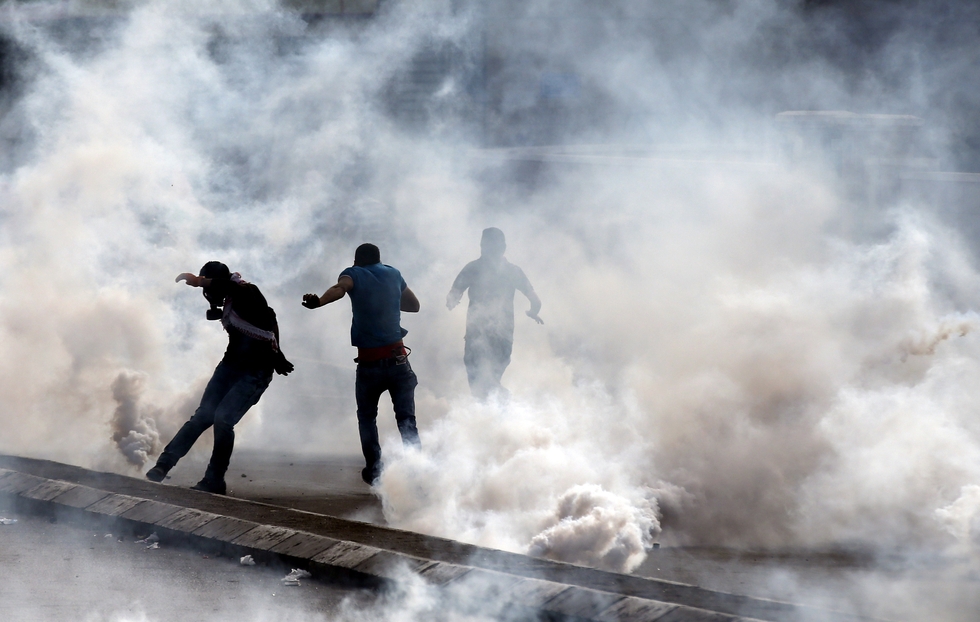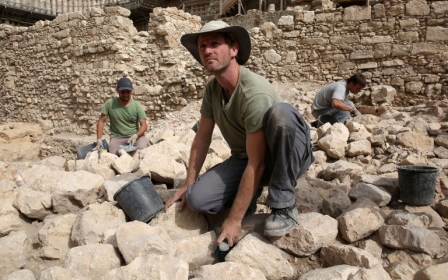The Palestinian Intifada: Six months, six observations

What are some of the key observations that can be taken from the cycle of confrontation and violence taking place in Palestine/Israel since October 2015? Six main conclusions can be drawn from this period.
First, the last few months showed how weak and illegitimate the Palestinian political parties are from across the entire political spectrum. These “historical” political parties have failed to provide the needed institutional representation and political support for the Palestinian youth revolting in a wave of anger against the multiple sources of oppression.
They have failed to mobilise the masses, failed to equip the revolting youth with much needed political education and hope for the future, and failed to challenge the security apparatuses and political decisions of the Palestinian Authority (PA). Some parties even seem uninterested in resuming the national struggle for political and civil rights and appear instead more keen on sustaining the status quo of persistent military occupation.
These multiple failures are not only because these political parties are dysfunctional or ineffective, but also because they lack the political will, and because their leadership and possibly their political programmes are deemed illegitimate and irrelevant by the Palestinian people.
The weakness of the traditional political parties is not an exogenous factor, but rather an outcome of a home-grown transformation that occurred in the Palestinian political structures, programme and styles of governance. In particular, these transformations have been taking place since 2007 in the aftermath of the intra-Palestinian divide and as a consequence of the state-building project in the occupied West Bank and the consolidation of power in besieged and occupied Gaza Strip.
Second, the last six months illustrated clearly once again the problematic role of the Palestinian Authority as a sub-contractor to the Israeli occupation as far as security matters are concerned. Despite the glowing rhetoric of the PLO leadership (not its chairman) about halting security collaboration with Israel, this however remains a myth and in reality has intensified over the last six months as was proudly celebrated by the leadership of the PA security establishment.
The (re)actions of the PA and its security forces are a major reason why the current wave of anger is becoming less intense in terms of collective actions, and more inclined towards individual actions. The Palestinian Authority, which is by definition and design an anti-revolution/anti-liberation structure, added another layer of obstacles for the Palestinian youth revolting in the last six months for the realisation of their political and human rights. The entrenched problematic role of the PA becomes more explicit in the moments of uprisings, as such moments expose its fundamental duty of “securing the occupier”.
Third, the Palestinian youth who are facing a high level of unemployment ranging between 30-40 percent are frustrated, angry and fed-up with the continuous cycles of failures and the lack of a future horizon. This status of frustration, helplessness and hopelessness was seen by many security-driven observers as a threat to the stability of the region and as a source of radicalisation that is opening up an avenue for the arrival of the ISIS to Palestine/Israel. The invalidity of this security-driven conclusion can be proven by highlighting the results of the most recent opinion polls that clearly show that there is no space or any welcoming environment for ISIS.
In March 2016, a poll by the Jerusalem Media and Communication Centre showed continued negative views towards ISIS, both in the West Bank and Gaza. Of those polled, 82 percent had negative attitudes to what ISIS is doing, and a majority believed that ISIS harms the Palestinian cause. A poll conducted in late-March 2016 by the Palestinian Center for Policy and Survey Research, showed that 88 percent of Palestinians condemn ISIS and view it as a radical group that does not represent true Islam.
Fourth, despite the sacrifices of the people, the leaderships of Fatah and Hamas are still refusing to reach a genuine reconciliation deal. The entrenched status of the intra-Palestinian divide was not shaken by the actions of the youth who took direct action over the last few months. This highlights the convenience of the status quo arrangements for the two parties who are prioritising the regional and international dynamics over the local ones.
The most recent Doha “reconciliation/power-sharing” talks that took place amidst the current youth uprising, testified the unwillingness of both parties, Fatah and Hamas, to compromise and hence proved their determination to fail. Only through popular accountability to the leaders of both parties, can the reconciliation agenda be upgraded within the existing political scene.
Fifth, the events of the last six months demonstrate the huge gap between the people and the authorities/ruling elite, between the voices coming from below and the voices coming from the so-called leadership. This gap shows how far apart the actions and narratives of the current leadership are from the demands and aspirations of the Palestinian people living in the occupied West Bank and Gaza, not to mention those living in diaspora and exile or the 1948 territories.
The recent TV interview that the PA’s Prime Minister Rami al-Hamadallah gave to Germany's DW, or the recent interview that the PA’s President Mahmoud Abbas gave to Israeli Channel 2, are remarkable illustrations of this gap. The denial and inability of the prime minister to recognise the realities on the ground as far as the PA is concerned, and the “strange” remarks by the president on security collaboration and the violent nature of the Palestinian, indicate that the leadership and the people are akin to living on two different planets. This observation should not be surprising to anyone as it is a characteristic of any political system that does not put the people at its core, and that sustains itself through undemocratic and authoritarian practices.
Sixth, some observers speculate that armed groups might take a leading and active role in the future trajectories of the current youth wave of anger. However, such speculation misses two vital issues related to the consequences of the PA’s security sector reform project, and to the conventional peace talks that follow any Palestinian uprising.
As part and parcel of the post-2007 PA’s state-building project, the PA’s security sector was given the priority in political and financial terms. The PA’s security and disarmament campaigns, particularly the one conducted in the “castles of resistance” in the occupied West Bank, aimed at criminalising armed resistance, and stripping the armed groups from their infrastructure and tools to resist the Israeli military occupation. The “partial fulfillment” of these two objectives has direct consequences on the ability of the Palestinian political parties’ armed groups to resume their military role. This key conclusion, despite its apparent clarity, is not acknowledged sufficiently in most of the security-driven policy spheres.
However, it is also worth noting that due to intra-Fatah infighting and regional dynamics, Palestinians might find themselves forced to deal with violent and bloody clashes (caused by chaos weapons that could easily appear on the scene) as a result of “power-sharing” contests. The “champions” of these contests, especially and primarily within Fatah once again, are prioritising their narrow political, personal and regional agenda despite the detrimental consequences for the Palestinian people, their safety and their struggle.
Finally, the existing evidence from the last three decades points out that the cycles of confrontation and uprisings are followed by “peace” talks and initiatives. The existing noise about the French Peace Initiative is a case in point. Very little is known about this “invisible” peace initiative, but what is clear is that the parameters for peace remain fixed to the old failing ones, with the old rules of the game and the same failing players dominating the scene of the “peace industry”. Hence, this is not a source of optimism to watch out for. Sources of optimism can be found elsewhere.
- Dr Alaa Tartir is the programme director of Al-Shabaka: The Palestinian Policy Network, and a post-doctoral researcher at the Graduate Institute’s Center on Conflict, Development, and Peacebuilding. Follow Alaa Tartir on Twitter @alaatartir
The views expressed in this article belong to the author and do not necessarily reflect the editorial policy of Middle East Eye.
Photo: Palestinian demonstrators run for cover after Israeli security forces fired tear gas canisters during clashes in the West Bank city of Bethlehem, on 13 October, 2015 (AFP).
New MEE newsletter: Jerusalem Dispatch
Sign up to get the latest insights and analysis on Israel-Palestine, alongside Turkey Unpacked and other MEE newsletters
Middle East Eye delivers independent and unrivalled coverage and analysis of the Middle East, North Africa and beyond. To learn more about republishing this content and the associated fees, please fill out this form. More about MEE can be found here.





